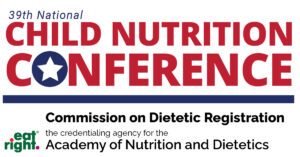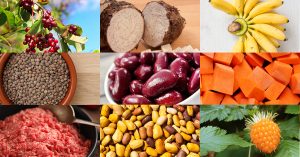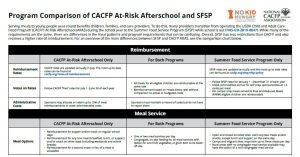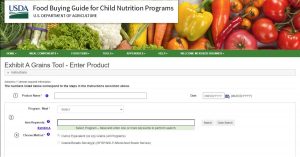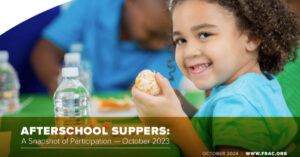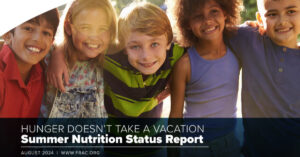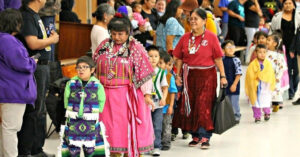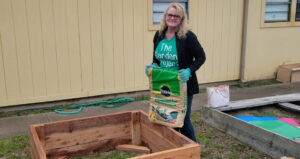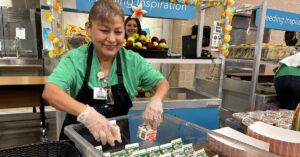Thursday continued the momentum with engaging discussions, thought-provoking workshops, and insightful featured speakers. Here’s a recap of the day’s key moments, with space for attendee reflections!
Read MoreWednesday was packed with workshops, networking, and key policy updates, keeping the energy high as attendees gained valuable insights. Here are the highlights, with space for attendee reflections!
Read MoreThe first full day of the National Child Nutrition Conference was packed with insightful sessions, networking opportunities, and important discussions on child nutrition policy and best practices. Here’s a look at the highlights from Tuesday.
Read MoreAttendees of the 2025 National Child Nutrition Conference can receive up to 16.5 hours of CEUs, accredited by the Commission on Dietetic Registration.
Read MoreThe National Child Nutrition Conference is officially underway! Monday was an exciting preconference day filled with invaluable sessions, networking opportunities, and in-depth discussions on child nutrition programs. Here’s a recap of the day’s events:
Read MoreDo CACFP operators need to provide one whole grain-rich grain per day when serving infants?
Read MoreThursday continued the momentum with engaging discussions, thought-provoking workshops, and insightful featured speakers. Here’s a recap of the day’s key moments, with space for attendee reflections!
Read MoreWednesday was packed with workshops, networking, and key policy updates, keeping the energy high as attendees gained valuable insights. Here are the highlights, with space for attendee reflections!
Read MoreThe first full day of the National Child Nutrition Conference was packed with insightful sessions, networking opportunities, and important discussions on child nutrition policy and best practices. Here’s a look at the highlights from Tuesday.
Read MoreAttendees of the 2025 National Child Nutrition Conference can receive up to 16.5 hours of CEUs, accredited by the Commission on Dietetic Registration.
Read MoreThe National Child Nutrition Conference is officially underway! Monday was an exciting preconference day filled with invaluable sessions, networking opportunities, and in-depth discussions on child nutrition programs. Here’s a recap of the day’s events:
Read MoreApril Virtual Events April 1, 2025 We’re only two weeks away from the National Child Nutrition Conference in Dallas, TX. No April Fool’s pranks here! Before we see you in Dallas though, be sure to catch our next webinar on “Supporting Autism in Early Childhood Settings”. After this we start diving into all things conference.…
Read MoreDuring the entire month of August, every congressional representative will be back in their home state. Don’t miss this opportunity to advocate for CACFP! Showcasing your program is one of the most impactful ways to advocate for the CACFP. Invite your elected officials to visit your site in August.
Read MoreUSDA released a memo with a second set of questions and answers on the rural non-congregate summer meals option established through the Consolidated Appropriations Act, 2023. The memorandum addresses the following topics: State Agency approval of non-congregate meal service; sponsors, site, and participant eligibility; meal service; monitoring; reporting; and general/miscellaneous guidance.
Read MoreUSDA has released guidance regarding onsite and offsite strategies and options for oversight and monitoring of the school meal programs.
Read MoreUSDA has released guidance regarding on-site and off-site strategies and options for oversight and monitoring of the Summer Food Service Program.
Read MoreUSDA has released guidance on when states have discretion to conduct monitoring off-site and what monitoring procedures are recommended. However, all three monitoring visits must still be conducted on-site.
Read MoreMany of the waivers and flexibilities created during the pandemic for CACFP operators are expiring soon or have already expired.
Read MoreThe Child and Adult Care Food Program has new creditable foods listed on the USDA Food Buying Guide! If you are new to the FBG, this interactive tool allows for easy display, search, and navigation of food yield information. In addition, users can compare yield information, create a favorite foods list, and access tools, such as the Recipe Analysis Workbook (RAW) and the Product Formulation Statement Workbook.
Read MoreThe Child and Adult Care Food Program community asked for more Spanish resources to be available on the National CACFP Sponsors Association website and we heard you! Available now in Spanish are more resources to help sponsors and providers with meal pattern requirements, best practices, and so much more!
Read MoreServing meals to young people year-round benefits children, families, and care providers. To do this, many providers transition from operating the USDA Child and Adult Care Food Program (CACFP) At-Risk Afterschool (ARAS) during the school year to the Summer Food Service Program (SFSP) while school is out. For an overview of the main differences between SFSP and CACFP ARAS, see the comparison chart below.
Read MoreNCA understands that the end of flexibilities will cause challenges for many CACFP sponsors and providers and we commend your continued commitment to providing nutritious meals and snacks to the children or adults in your care. In preparation for the end of the additional reimbursement, we have collected the following resources to help you successfully provide meals even if your available budget decreases.
Read MoreCDC created three new fact sheets for Early Care and Education (ECE) providers about Early Child Nutrition and Feeding. The fact sheets offer tips and best practices for supporting breastfeeding families, information about safe storage and handling of breastmilk, and strategies for introducing solid foods.
Read MoreDo CACFP operators need to provide one whole grain-rich grain per day when serving infants?
Read MoreAre edamame creditable in the CACFP?
Read MoreDoes tomato sauce credit by volume served in the CACFP?
Read MoreDoes tomato paste and tomato puree credit based on the volume served?
Read MoreIs there a milk transition period for infants and preschool age children?
Read MoreIs a medical statement needed for meal modifications due to disability reasons?
Read MoreThe Child and Adult Care Food Program has new creditable foods listed on the USDA Food Buying Guide! If you are new to the FBG, this interactive tool allows for easy display, search, and navigation of food yield information. In addition, users can compare yield information, create a favorite foods list, and access tools, such as the Recipe Analysis Workbook (RAW) and the Product Formulation Statement Workbook.
Read MoreThe Child and Adult Care Food Program community asked for more Spanish resources to be available on the National CACFP Sponsors Association website and we heard you! Available now in Spanish are more resources to help sponsors and providers with meal pattern requirements, best practices, and so much more!
Read MoreServing meals to young people year-round benefits children, families, and care providers. To do this, many providers transition from operating the USDA Child and Adult Care Food Program (CACFP) At-Risk Afterschool (ARAS) during the school year to the Summer Food Service Program (SFSP) while school is out. For an overview of the main differences between SFSP and CACFP ARAS, see the comparison chart below.
Read MoreNCA understands that the end of flexibilities will cause challenges for many CACFP sponsors and providers and we commend your continued commitment to providing nutritious meals and snacks to the children or adults in your care. In preparation for the end of the additional reimbursement, we have collected the following resources to help you successfully provide meals even if your available budget decreases.
Read MoreCDC created three new fact sheets for Early Care and Education (ECE) providers about Early Child Nutrition and Feeding. The fact sheets offer tips and best practices for supporting breastfeeding families, information about safe storage and handling of breastmilk, and strategies for introducing solid foods.
Read MoreThe “Characteristics of Emergency Shelters Participating in the CACFP” study by USDA seeks to better understand the characteristics of CACFP emergency shelters, who they serve, how CACFP fits into their operations, and their challenges with CACFP. The study was conducted in 2023 and collected data from 242 emergency shelters that participate in CACFP in Fiscal Year 2023.
Read MoreA survey was administered in the spring of 2023 of licensed California family child care homes (FCCH) to assess the perceived impacts of the increased reimbursement during the Covid-19 pandemic on CACFP participation and anticipated challenges with reinstated tiered rates.
Read MoreThe USDA recently released a study on the “Characteristics of Adult Day Care Centers that Participate in the USDA’s Child and Adult Care Food Program” which seeks to better understand key characteristics of adult day care centers participating in CACFP.
Read MoreUSDA released a survey report focused on SFSP and SSO sponsors who operated the non-congregate meal service option in qualifying rural areas in summer 2023.
Read MoreAfterschool Snack Programs include the National School Lunch Program (NSLP) and the Child and Adult Care Food Program (CACFP). Through NSLP schools can serve one snack afterschool, however through the CACFP schools and sponsoring organizations are able to serve a snack in addition to a supper. This additional supper is an important opportunity to meet children’s nutritional needs after the school day is over. A report by the Food Research and Action Center (FRAC) found that afterschool supper participation increased from October 2022 to October 2023 by 6%.
Read MoreFRAC’s latest report, Hunger Doesn’t Take a Vacation: Summer Nutrition Status Report 2024, reveals a drop in the number of children receiving nutrition over the summer following the loss of pandemic-era waivers.
Read More



